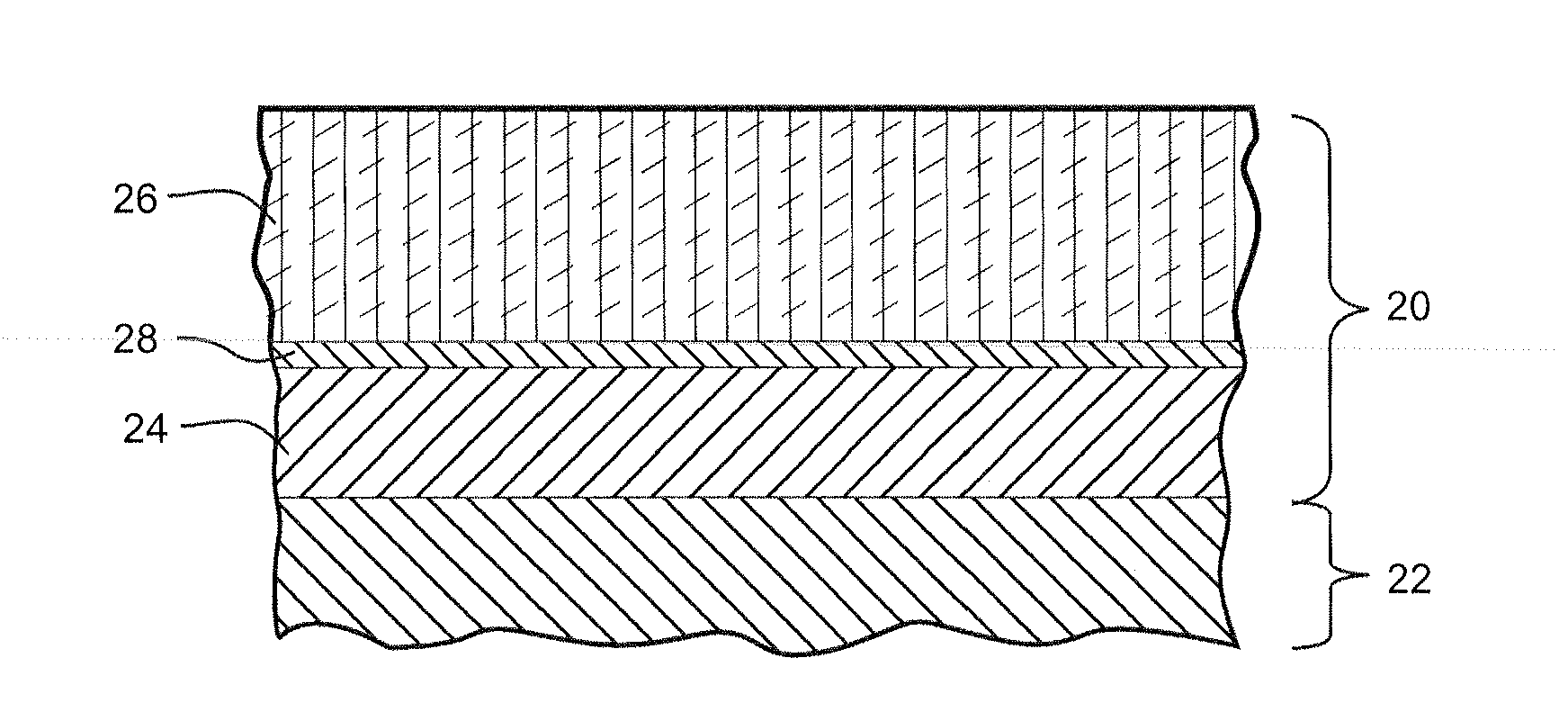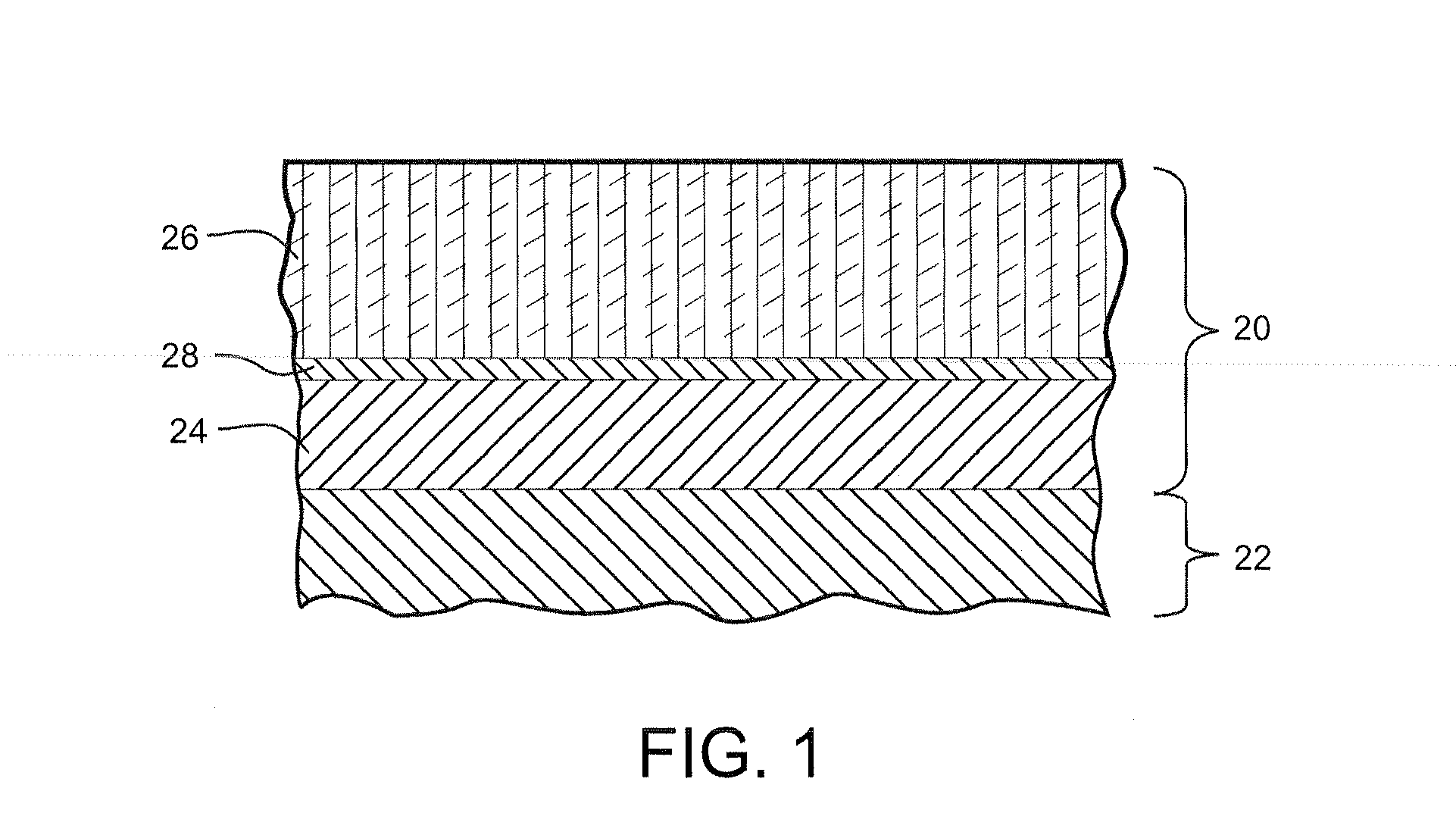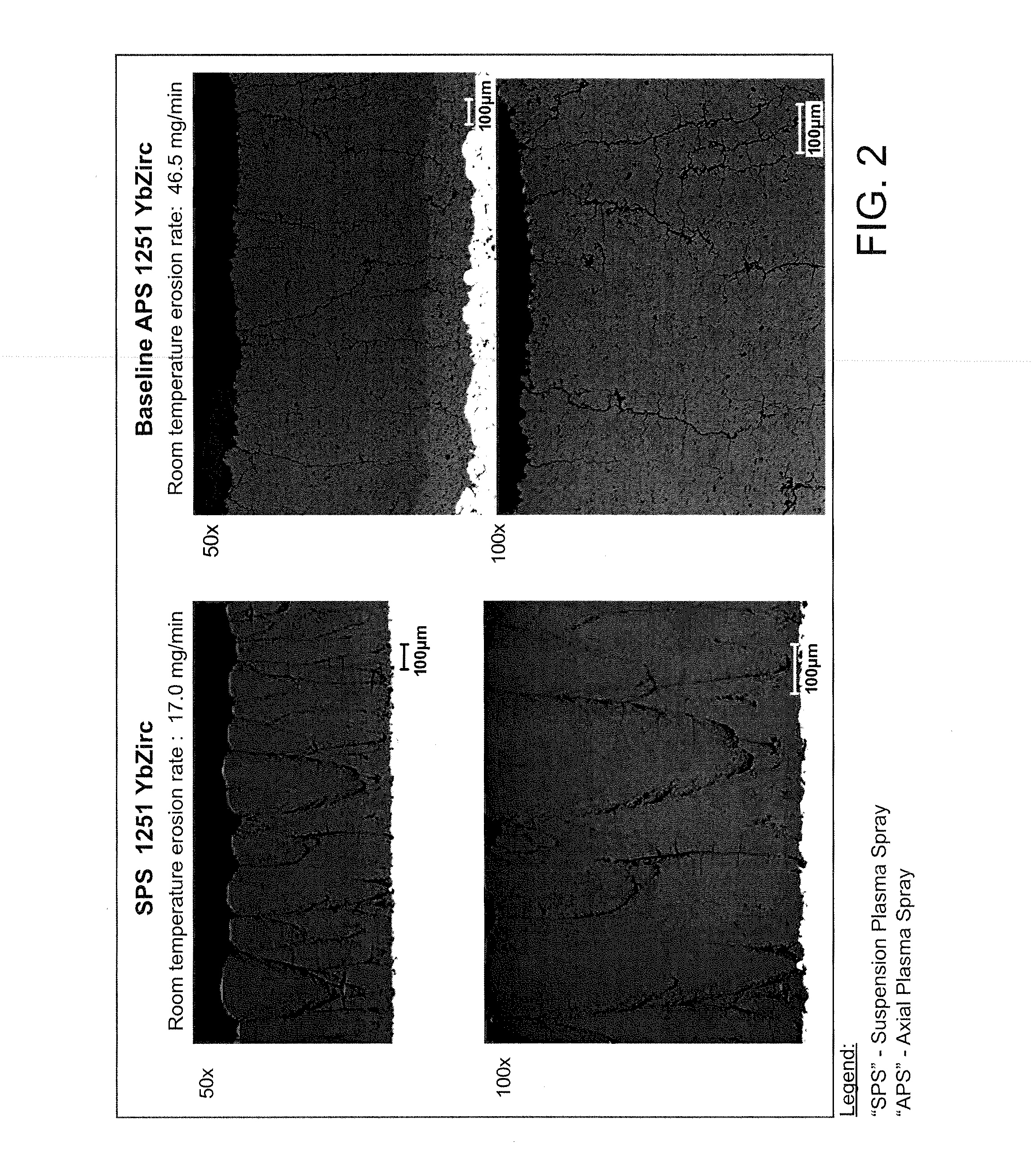Novel architectures for ultra low thermal conductivity thermal barrier coatings with improved erosion and impact properties
a thermal barrier coating, ultra-low thermal conductivity technology, applied in the direction of machines/engines, mechanical equipment, transportation and packaging, etc., can solve the problems of less mechanical stability, less resistance to erosion in harsh environments, and inability to retain adequate mechanical strength properties of hot gas sections of engines, etc., to achieve low thermal conductivity and high erosion resistance
- Summary
- Abstract
- Description
- Claims
- Application Information
AI Technical Summary
Benefits of technology
Problems solved by technology
Method used
Image
Examples
Embodiment Construction
[0015]As noted above, the new thermal barrier coatings according to the invention result in a unique combination of improved physical properties, namely an increase in erosion resistance coupled with a significantly lower thermal conductivity (“k”). From a practical and commercial standpoint, the lower erosion and reduced thermal conductivity of the key hot gas components allows the gas turbine engine to operate for much longer periods of time at higher firing temperatures, thereby achieving significantly higher overall operating efficiencies. It has been found, for example, that the use of the new ultra low k thermal conductivity ceramic coatings described below can improve the combined cycle operating efficiency of a gas turbine engine by at least 0.1% points. The cooling benefits for TBCs engineered with the lower thermal conductivities also increase the overall combined cycle efficiency (including buckets, nozzles, etc.) by at least 0.1%. Thus, a 30% drop in the thermal k transl...
PUM
| Property | Measurement | Unit |
|---|---|---|
| Temperature | aaaaa | aaaaa |
| Thickness | aaaaa | aaaaa |
| Thickness | aaaaa | aaaaa |
Abstract
Description
Claims
Application Information
 Login to View More
Login to View More - R&D
- Intellectual Property
- Life Sciences
- Materials
- Tech Scout
- Unparalleled Data Quality
- Higher Quality Content
- 60% Fewer Hallucinations
Browse by: Latest US Patents, China's latest patents, Technical Efficacy Thesaurus, Application Domain, Technology Topic, Popular Technical Reports.
© 2025 PatSnap. All rights reserved.Legal|Privacy policy|Modern Slavery Act Transparency Statement|Sitemap|About US| Contact US: help@patsnap.com



